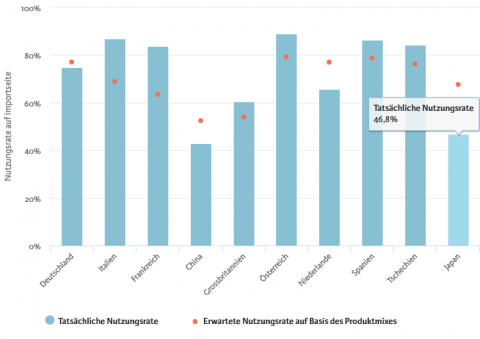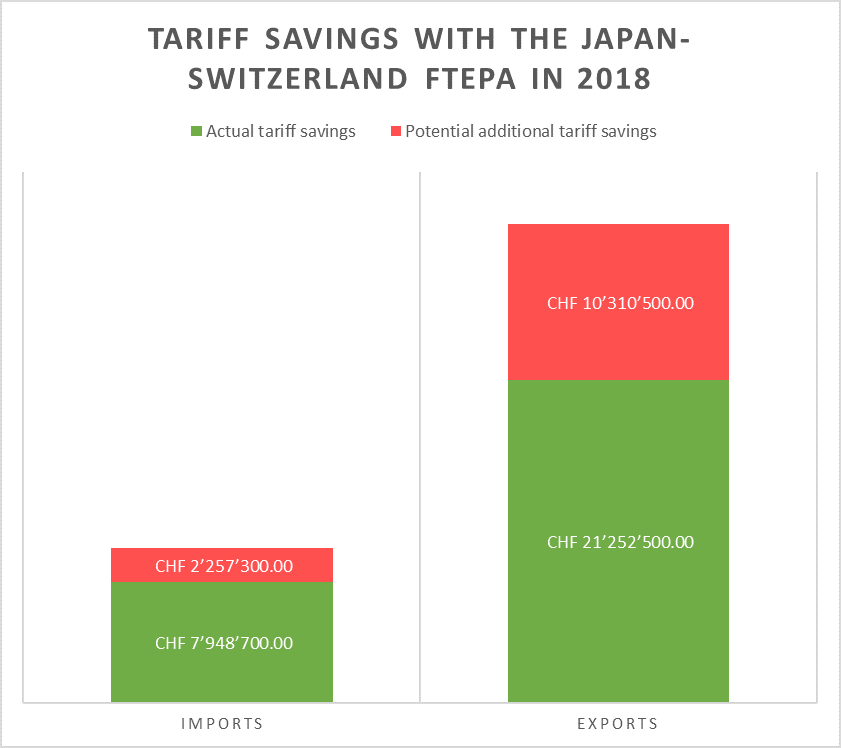First Comprehensive Analysis on the Use of Swiss FTAs

... has still potential to be used more often.
The study “Analysis on the use of free trade agreements” by Stefan Legge and Piotr Lukaszuk of the University of St. Gallen shows that Swiss importers and consumers saved CHF 2.5 billion in customs duties in 2018 thanks to Switzerland’s network of 30 free trade agreements (FTAs) with 40 partners, the EFTA Convention and the FTA with the European Union. This leads to a usage rate for Swiss FTAs of 73%. For exports to FTA partner countries, the preference utilisation rate in 2018 was 80%. This corresponds to tariff savings of CHF 1.8 billion.
The second part of the study consists of an FTA monitor, a helpful overview that has been missing for many years, which is one of the reasons why the Business Audit Committee of the National Council (GPK-N) urged the Swiss government to provide a systematic examination of the use and impact of the numerous FTAs Switzerland has concluded.
For Japan the study has confirmed what has already been known for some time: In 2018 Swiss exporters could save tariffs of CHF 21 million, while imports from Japan benefitted from savings of CHF 7.9 million (See figure below). The usage rate for exports was at 53.8% and of 46.8% for imports. The Swiss product group benefiting most from the agreements is beverages that represent about half of all savings, i.e. more than CHF 10 million. On the import side, the biggest beneficiary of the JSFTEPA are automobiles for which CHF 5.2 million in custom duties have been saved.

What is new from the study by Legge and Lukaszuk, is an analysis of the expected use of the agreements compared with the actual use. Here the authors have estimated an expected usage rate for each country based on the product mix that is traded. Despite rather modest expectations for Japanese exports to Switzerland, it appears that actual use is even significantly below that level. A similar pattern has been observed for China and Canada.
The authors of the study conclude that “even if the overall savings in customs duties appear to be relatively small (in relation to total trade), it is often individual industries and trade flows that benefit considerably.” Consequently, the State Secretariat for Economic Affairs has announced that further studies will be conducted in order to identify the factors that lead to incomplete use of free trade agreements: “The aim is to identify measures to increase the use of free trade agreements, especially for products with high tariff saving potential” as it is stated on the SECO webpage on the use of free trade agreements.

